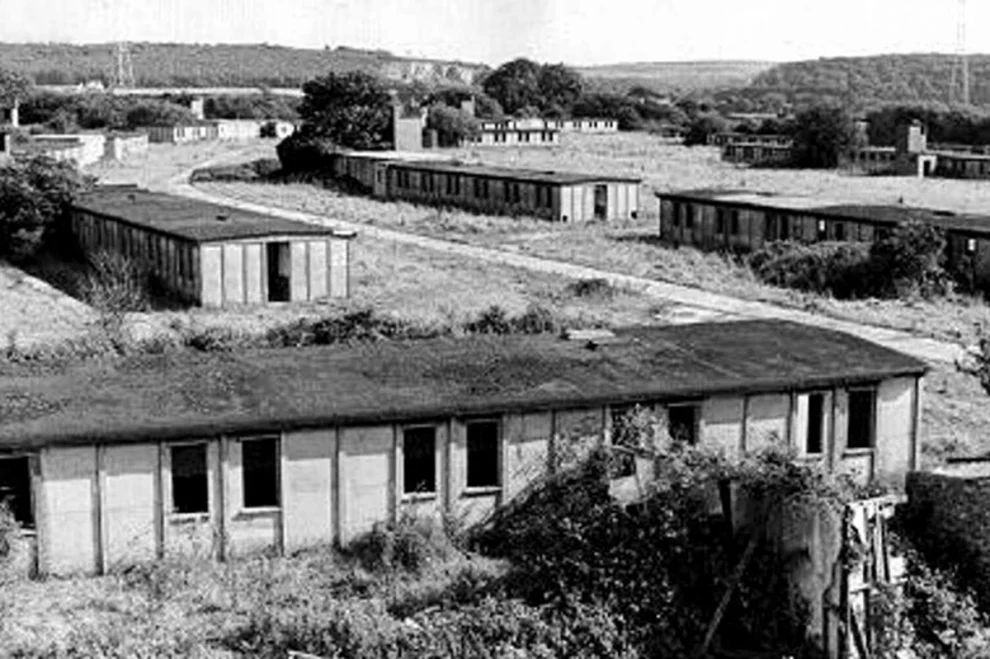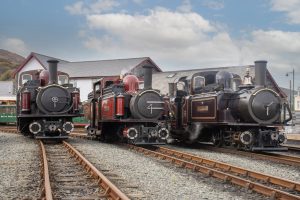YOU’RE probably familiar with The Great Escape, a daring attempt by Allied forces to escape a German prisoner of war camp.
However, we had a similar story here in Wales, with the Island Farm prisoner of war camp.
In the months leading up to the start of WWII an overspill country branch of the Woolwich Arsenal was built at Waterton on the outskirts of Bridgend.
The Royal Ordnance Factory (ROF 53), known as “The Arsenal” and “The Admiralty” to locals, was opened in 1938 a year before the outbreak of WWII.
A factory was constructed in two distinct sections:
1) The shell-making part of the factory which sited in Waterton. Due to the vast quantity of shells it made for the Navy, this part of the factory had the nickname of “The Admiralty” by the workers.
2) Once the empty shells had been made, they were then transferred to the shell filling part of the site, just below the village of Coity. This part of the factory was nicknamed “The Arsenal”. Here the shells were completed before being stored in one of 7 very large underground storage bunkers before being distributed to the front lines.
During its peak production, 40,000 people worked in the factory making it the largest employee factory that has ever been in Britain.
The factory was later adapted into a prisoner of war camp.
The camp remained empty until 1943, when it was used to accommodate American troops who would subsequently be involved in the Allied invasion of France.

After the invasion the authorities had to find suitable accommodation for large numbers of POWs captured in Europe. The prefabricated concrete huts surrounded by open fields at Island Farm were considered ideal, although the barracks had to be converted and barbed wire fences erected.
This work had not been completed by the time the first batch of prisoners arrived, so the prisoners were put to work completing the conversion.
Island Farm was designated as Camp 198 and was to hold almost 2,000 prisoners. The first POWs were a mixture of Italian and German troops, but the War Office soon decided that the camp was too comfortable for enlisted men and that German officers should be held there. The first officer prisoners arrived in November 1944.
Soon after their arrival at Island Farm the POWs began escape efforts, with two tunnels being dug in the camp.
The first was discovered in January 1945, but the second escaped detection and on 10 March 1945, 70 prisoners escaped through a tunnel dug from Hut Nine (the only hut now left standing). The tunnel was about 30 feet (9.1 m) long and breached the perimeter fence.
Some of the techniques used by the inmates were ingenious and not too dissimilar to those shown in the war film The Great Escape about Allied POWs.
Excavating the tunnels was not easy because of the heavy clay soil upon which the camp was built. Cans, meat tins, and even knives from the canteen were used as digging implements.
The soil was hauled out of the tunnel on a makeshift skip and put into kit bags. At first, prisoners carried the soil in their pockets to the long-jump pit or garden plots. Others kneaded clay into balls and dropped them through a hole in a false wall they had constructed in an unused room in one of the huts.
To support the tunnel roof, oak benches were stolen from the canteen and bed legs were cut down when supplies of wood were depleted. A ventilation pipeline was made from condensed milk tins; air was forced through by a hand-operated fan.
The tunnel even had its own electric lights, tapped off the mains supply. Noise was concealed by chorus singing.
The escapees were divided into groups, each of which was equipped with a map, homemade compass, and food.
Each person in the group also had identity papers, produced in the camp. All these preparations required tremendous organization, yet it is not known who actually organized the escape.
For security purposes, each escaper’s identity was known only to the others in his small group. This anonymity protected them against betrayal and prevented discovery of the full extent of the escape.
At around 10pm on March 10, the prisoners made their move; a few stole the local doctor’s car and got as far as Birmingham, at least 120 miles away, and another group got to the port of Southampton.
The prisoners knew their way around through crude but accurate drawings of Wales and the surrounding area, mainly of railway lines and principal roads.
In his book, The German Great Escape, Peter Phillips claims that 84 prisoners actually got out, eclipsing the 76 Allied POWs who broke out of Stalag Luft III; the inspiration for the film The Great Escape.
Fourteen were captured very soon afterwards, allowing officials to announce, for propaganda reasons, that only 70 had escaped.
All the escapees were eventually recaptured, although this is also disputed by Phillips, who claims that three escapees spotted in Kent were never caught.
Only three weeks after the escape, on 31 March 1945, the authorities suddenly transferred all 1,600 officers out of Island Farm Camp. It was then designated Special Camp Eleven and was prepared to receive senior German officers, many of whom had been captured in France and were awaiting trial at Nuremberg.
In all there were 160 officers holding the rank of general, admiral, or field marshal, including a number of Hitler’s closest advisers.
Island Farm Camp finally closed in 1948, when the last prisoners were returned to Germany.
In 2016, an archaeology investigation was undertaken of the site to look for the escape tunnel, including surface surveying using lidar and geophysics.
An intrusive investigation found the tunnel to be in relatively good condition, still containing the wooden support shoring.


















Add Comment